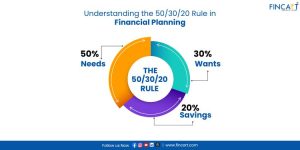Companies need funding to expand and grow. The two main options they have to secure funding are debt financing and equity financing. Equity financing means raising money by issuing shares of stock, which can be disadvantageous as it dilutes the company’s ownership among the current shareholders. Debt financing on the other hand is about borrowing money to fund operations or investments. Financial leverage is when companies use this debt or borrowed capital to grow.
Financial leverage can significantly boost a company’s growth potential, but it also comes with added risk, as sometimes highly leveraged companies can struggle to meet repayment obligations. To manage debt, companies use leverage ratios, which are a category of financial ratios to help monitor their debt levels and assess the company’s financial stability. Investors also use these ratios to get a picture of a company’s debt situation and whether or not the company is managing its debt wisely. So let’s understand what leverage ratio means, look at its various types, and how investors can benefit from it.
What is a Leverage Ratio?
Leverage ratios show us just how much of a company’s capital is financed through debt. By definition leverage ratio measures the amount of debt a company has taken compared to other metrics found in income statements, balance sheets, and cash flow statements, such as total assets, EBIT, or equity. Leverage ratio is a broad term, so there is no single leverage ratio. Instead, there are many different types of leverage ratios, each of which offers different perspectives and insights depending on the financial metrics.
For example, the debt-to-equity ratio is a leverage ratio used to compare a company’s total debt to the equity of shareholders. Similarly, the debt ratio can be used to understand the proportion of assets which are financed by debt overall.
If a company has higher leverage, that means it has taken on a higher proportion of debt to finance its activities. While this can be very useful to increase the company’s productivity or to expand, it can also spell trouble for investors should the company run into financial problems and find itself in a position where it is unable to meet its obligations.
Why is Leverage Ratio Important in Finance?
There are many reasons why investors should pay attention to leverage ratios:
- Leverage ratios and give investors a look into the quality of debt management in a company. Higher leverage ratios generally mean that the company has taken on a lot of debt, which can be useful in periods of economic growth but risky should the company encounter financial difficulties. Investors can use them to assess the default risk involved.
- Creditors also use leverage ratios before setting loan terms or deciding whether to extend credit to a company. If most of the money is going towards paying off debts, the company has limited growth potential and is at an increased risk of default.
- In some rare cases, even having a lower leverage ratio can be concerning, as it may indicate a company is unable to generate the revenue needed to justify additional borrowing.
Common Types of Leverage Ratios
As established earlier, leverage ratio is an umbrella term, so many different types of ratios are used by investors to analyse a company’s debt management. Here are some of them:
1. Debt Ratio
Also known as the debt to asset ratio, this is one of the simplest leverage ratios which compares a company’s total (short and long-term) debt to its total assets.
2. Debt-to-Equity Ratio
The debt-to-equity ratio is one of the most popular leverage ratios among investors. It compares the total debt taken by a company to its shareholder equity. The higher the ratio, the more debt a company has taken to fund projects.
3. Debt-to-EBITDA Ratio
EBITDA stands for earnings before interest, taxes, depreciation, and amortisation. This ratio is generally used by creditors and is used to evaluate the probability that a company may default on its loan.
4. Debt-to-Capital Ratio
This is an important leverage ratio as it compares a company’s total debt to its total capital base, that is, total debt plus total equity.
5. Equity Multiplier
The equity multiplier is also known as the asset-to-equity ratio, and it is used to assess a company’s financial leverage by looking at how much of its assets are financed by equity. Debt isn’t directly mentioned in this ratio but it is a part of total assets (debt + shareholder equity).
6. Interest Coverage Ratio
One can obtain the interest coverage ratio by dividing the company’s operating income by its interest expenses. This metric can help evaluate a company’s ability to pay interest on its outstanding debt. The higher this ratio is, the better a company’s ability to cover its interest obligations.
7. Fixed-Charge Coverage Ratio
This ratio is used to determine for how many months a company can meet its financial obligations. It compares a company’s earnings before interest and taxes to the interest expenses of long-term debt.
Leverage Ratio Formula
The leverage ratio, often referred to as the debt-to-EBITDA ratio, is calculated by dividing the total debt balance by EBITDA for the corresponding period. Leverage ratios are used to compare a company’s debt with other financial metrics, helping to assess financial health and risk. Each type of leverage ratio has its own specific formula, depending on the metrics being analyzed:
- Debt Ratio = (total debt / total assets)
- Debt-to-Equity Ratio = (total debt / equity)
- Debt-to-EBITDA Ratio = (total debt / EBITDA)
- Debt-to-Capital Ratio = total debt / (total debt + total equity)
- Equity Multiplier = (total assets / total equity)
- Interest Coverage Ratio = (operational income / interest expense)
- Fixed-Charge Coverage Ratio = (EBIT / interest expense)
Example of Leverage Ratio Calculation
Let’s have a look at a simple example of leverage ratio calculation. Suppose a company has:
- Total assets of Rs. 20 crores
- Total debt of Rs. 12 crores
- Total equity of Rs. 8 crores
- EBITA of Rs. 5 crores
Here’s how we can calculate some financial leverage ratios:
1. Debt Ratio
Debt Ratio is given by total debt / total assets
Debt Ratio = Rs. 12 crores / Rs. 20 crores
Debt Ratio = 0.6
2. Debt-to-Equity Ratio
Debt-to-Equity Ratio = (total debt / equity)
Debt-to-Equity Ratio = Rs. 12 crores / Rs. 8 crores
Debt-to-Equity Ratio = 1.5
3. Debt-to-EBITDA Ratio
Debt-to-EBITDA Ratio = (total debt / EBITDA)
Debt-to-EBITDA Ratio = Rs. 12 crores / Rs. 5 crores
Debt-to-EBITDA Ratio = 2.4
4. Debt-to-Capital Ratio
Debt-to-Capital Ratio = total debt / (total debt + total equity)
Debt-to-Capital Ratio = Rs. 12 crores / (Rs. 12 crores + Rs. 8 crores)
Debt-to-Capital Ratio = Rs. 12 crores / Rs. 20 crores
Debt-to-Capital Ratio = 0.6
5. Equity Multiplier
Equity Multiplier can be calculated by total assets / total equity
Equity Multiplier = Rs. 20 crores / Rs. 8 crores
Equity Multiplier = 2.5
Advantages of Using Leverage Ratios
Companies, creditors, and investors can use leverage ratios to gain insights into a business’s debt management and make better, more informed decisions. Companies use these ratios to understand their debt position relative to competitors and adjust their financial strategies accordingly. Creditors consider these ratios important as they allow them to evaluate a borrower’s creditworthiness. They set interest rates and loan terms based on these ratios. These ratios are also essential for investors as they can be used to assess the level of risk associated with an investment.
A comparison of leverage ratios can be done on two fronts. First, current leverage ratios can be compared with past leverage ratios to gain an understanding of how a company’s debt position has evolved over time. This analysis can be used to identify trends in the company’s debt management over the years, showing whether the company is increasing or decreasing its reliance on borrowed funds. Second, a company’s leverage ratios can be compared with industry averages or competitor ratios to see how it stacks up against others in the same sector. This is especially important for investors as it puts things in context.
Conclusion
A leverage ratio is a type of financial ratio that helps companies, creditors, and investors measure the debt involved in a business. Different types of leverage ratios compare debt with different financial metrics like equity and assets to assess the company’s financial stability and risk. Generally, the higher the leverage ratio, the more debt a company is using as funding.
This can be a good thing if the company generates more earnings than it pays interest, but too much debt can also cause a lot of financial strain which can lead to negative results for all shareholders. However, ratios such as interest coverage ratios should have higher values as higher values indicate the business can easily pay off any interest.
If you’re wondering what a good financial leverage ratio is, well, the answer depends on the type of company or industry being examined.
For example, a company that relies heavily on capital, such as manufacturers, tends to have higher debt levels due to the significant investment needed for equipment and infrastructure. On the other hand, service-based businesses operate with less debt as they have fewer physical assets and lower capital requirements, and consequently have lower leverage ratios. It’s always good to compare these ratios across the industry to get a more accurate picture of what these values mean.




